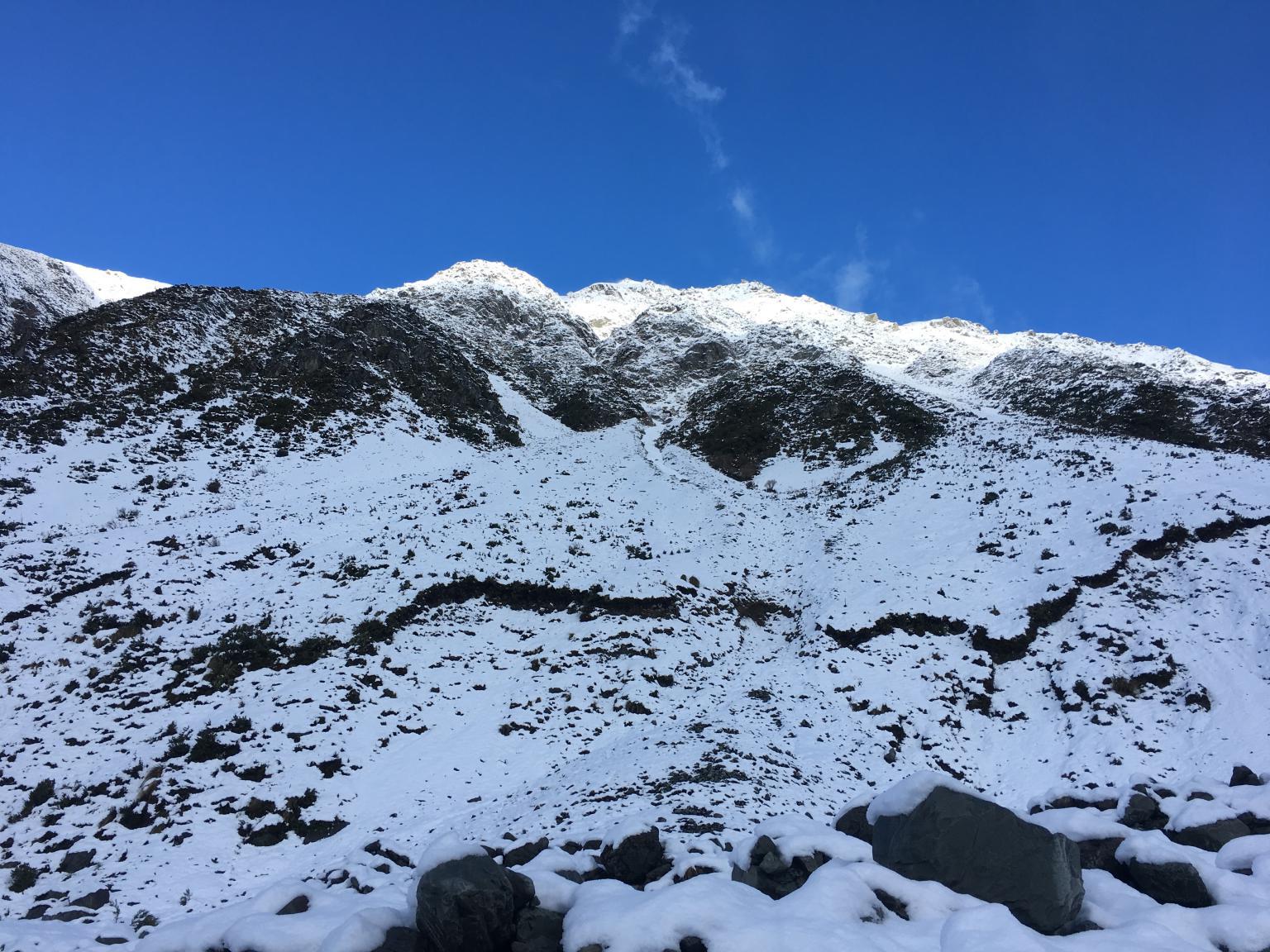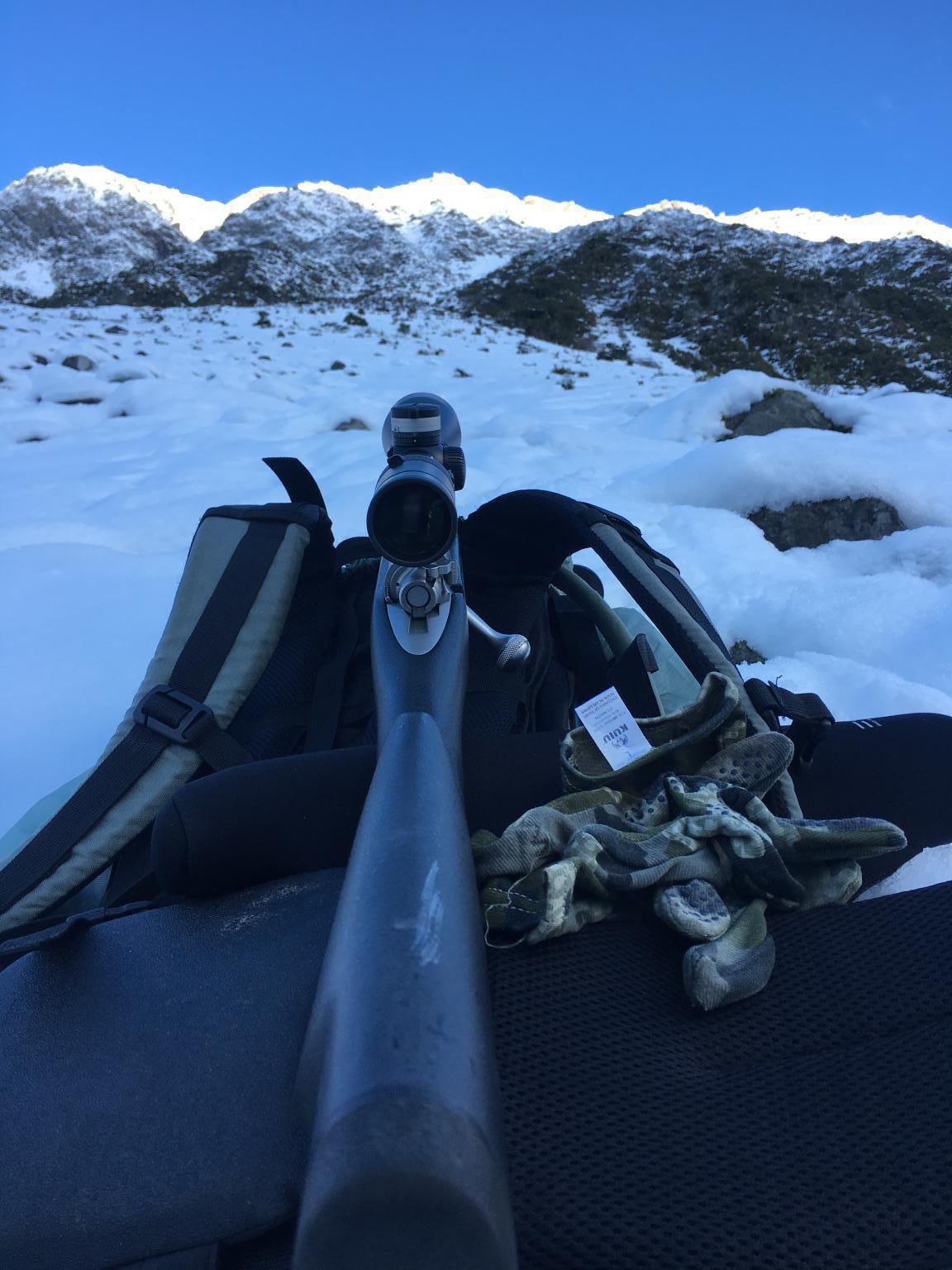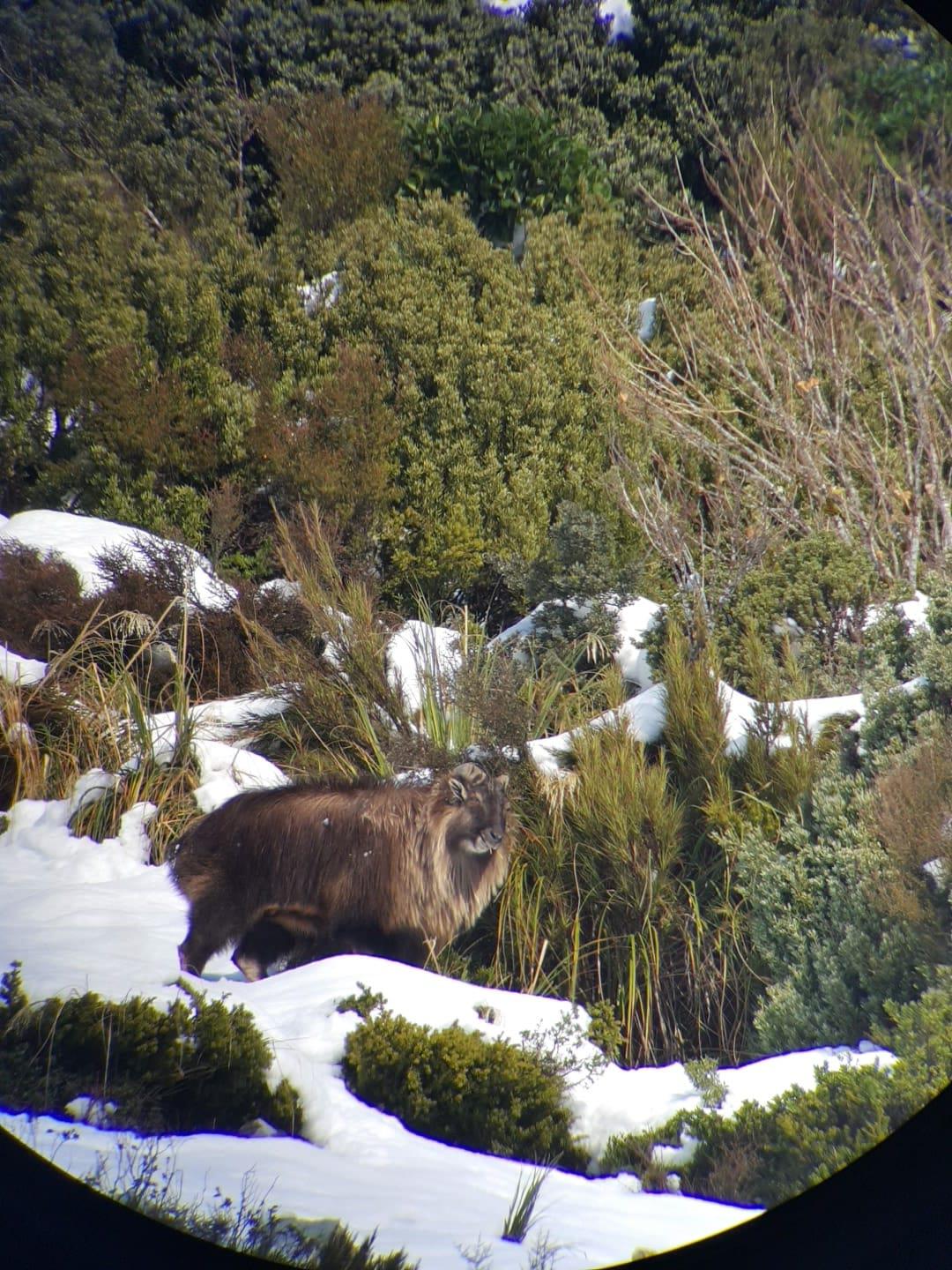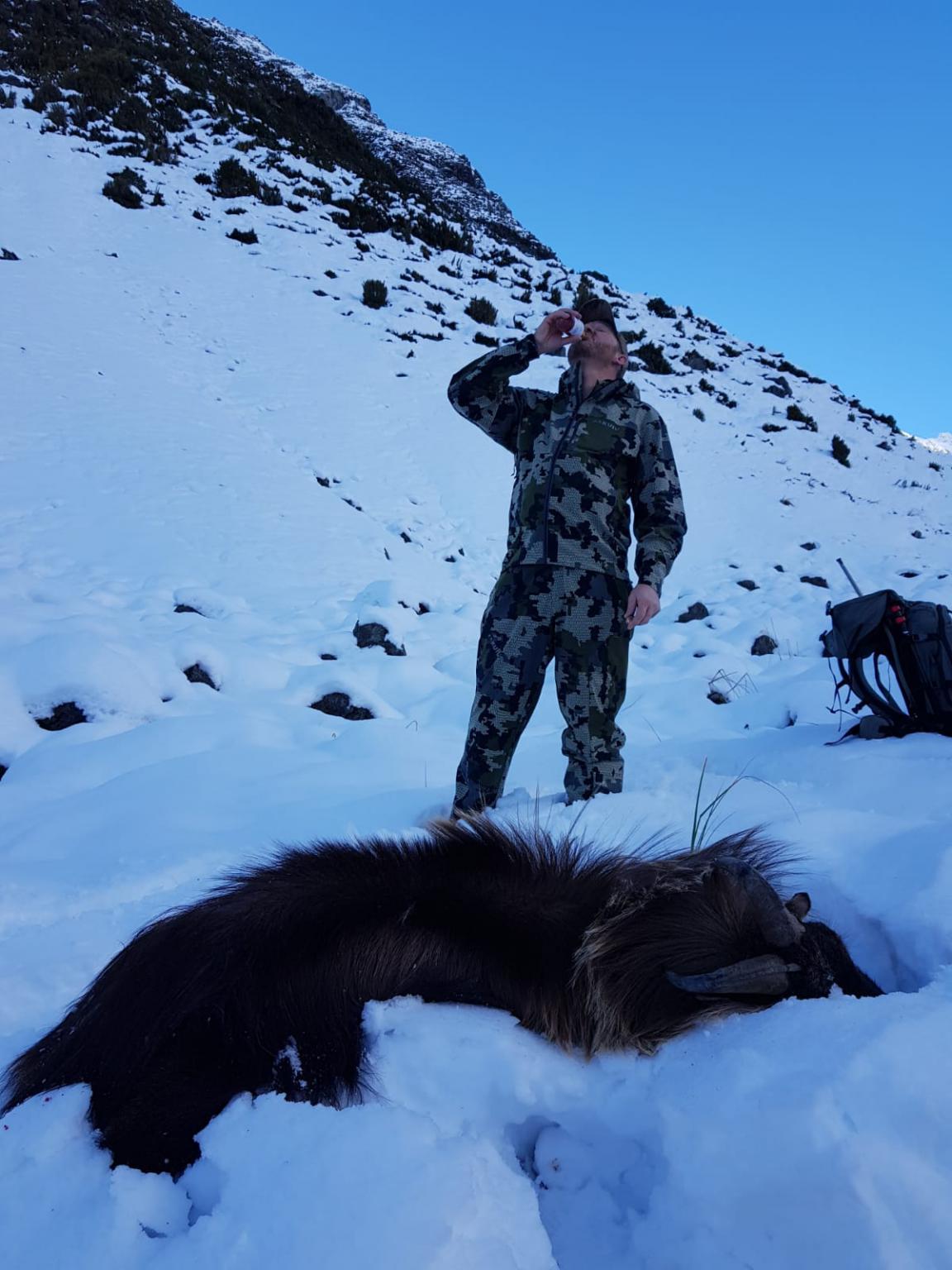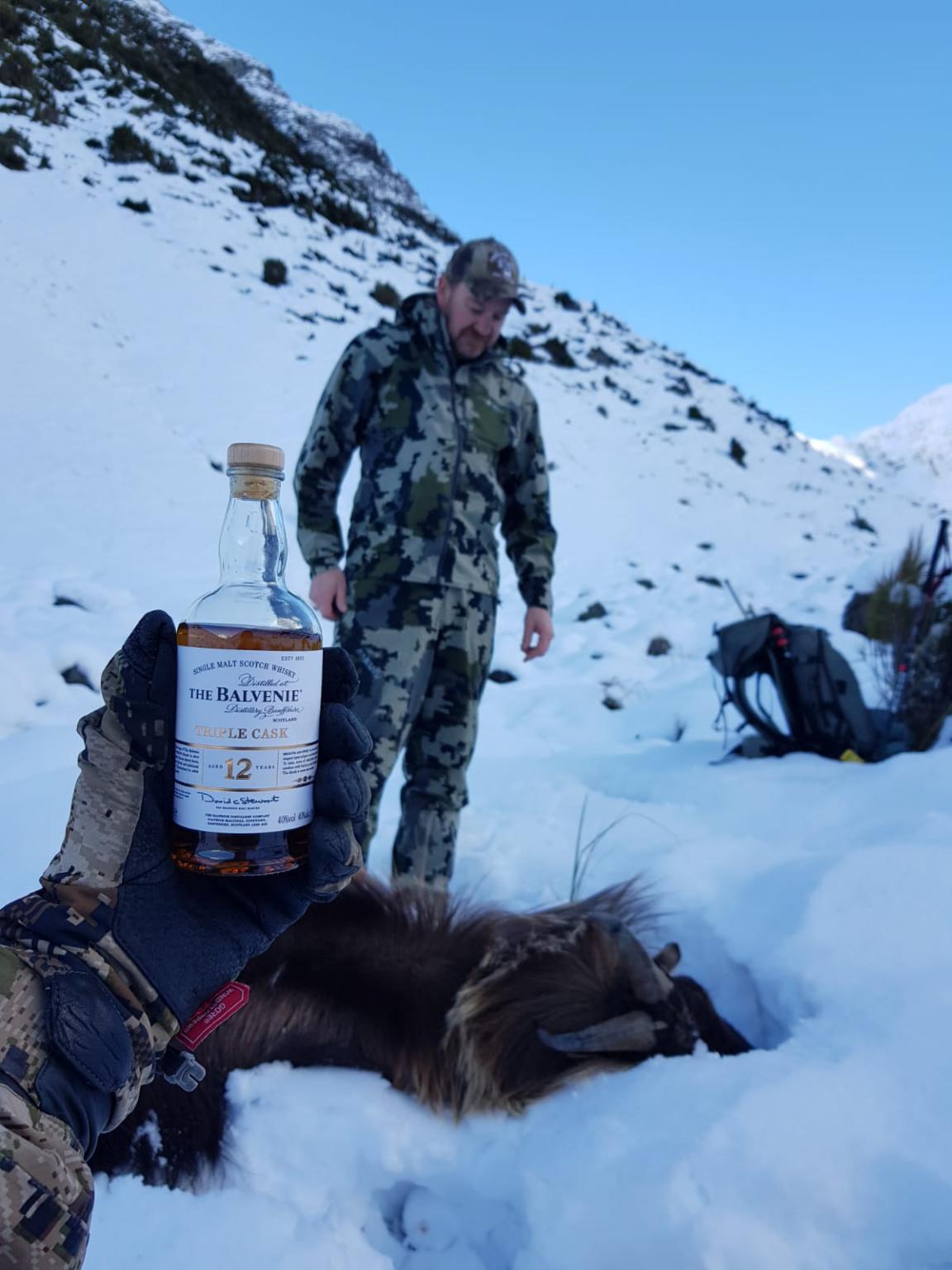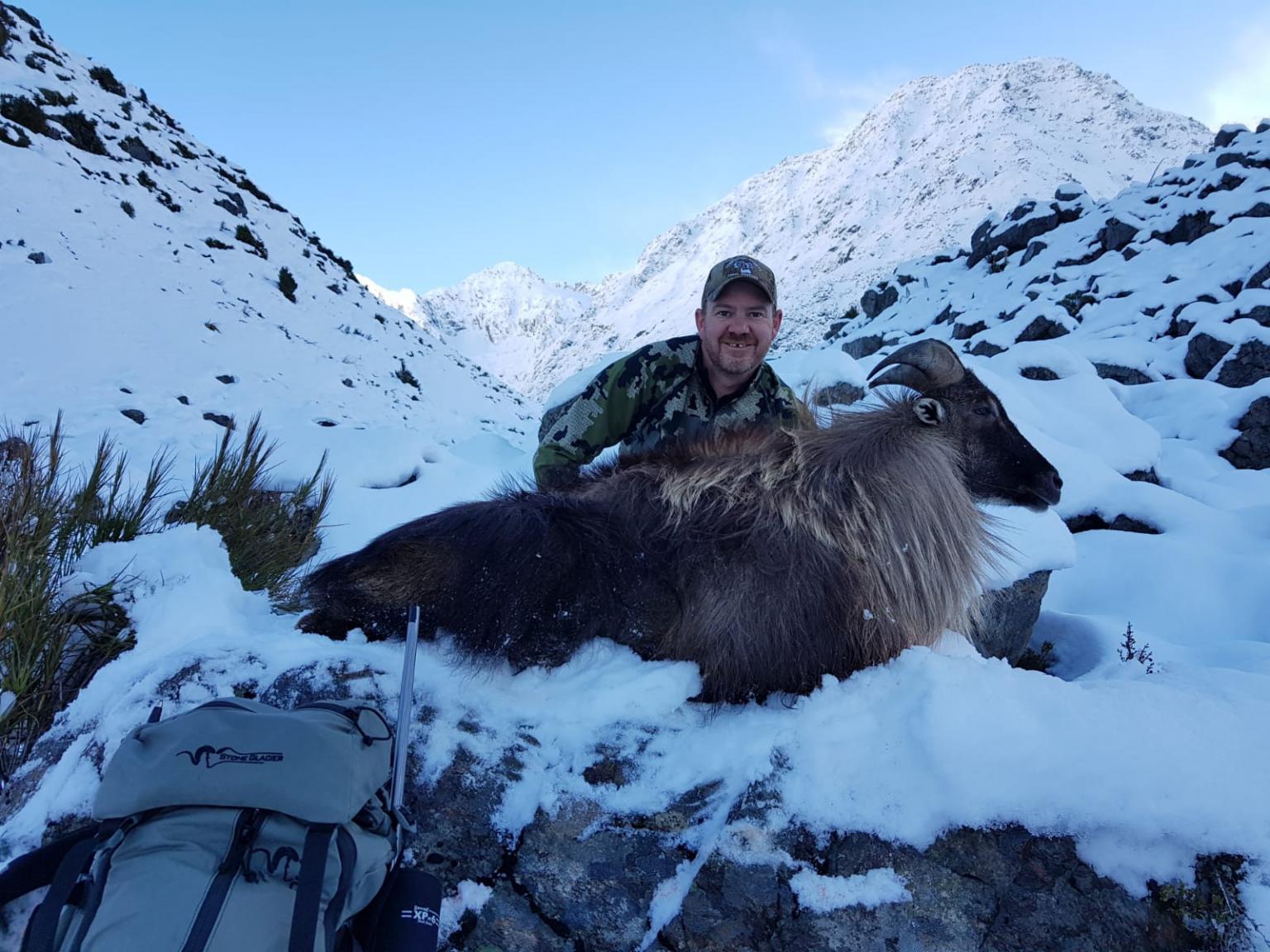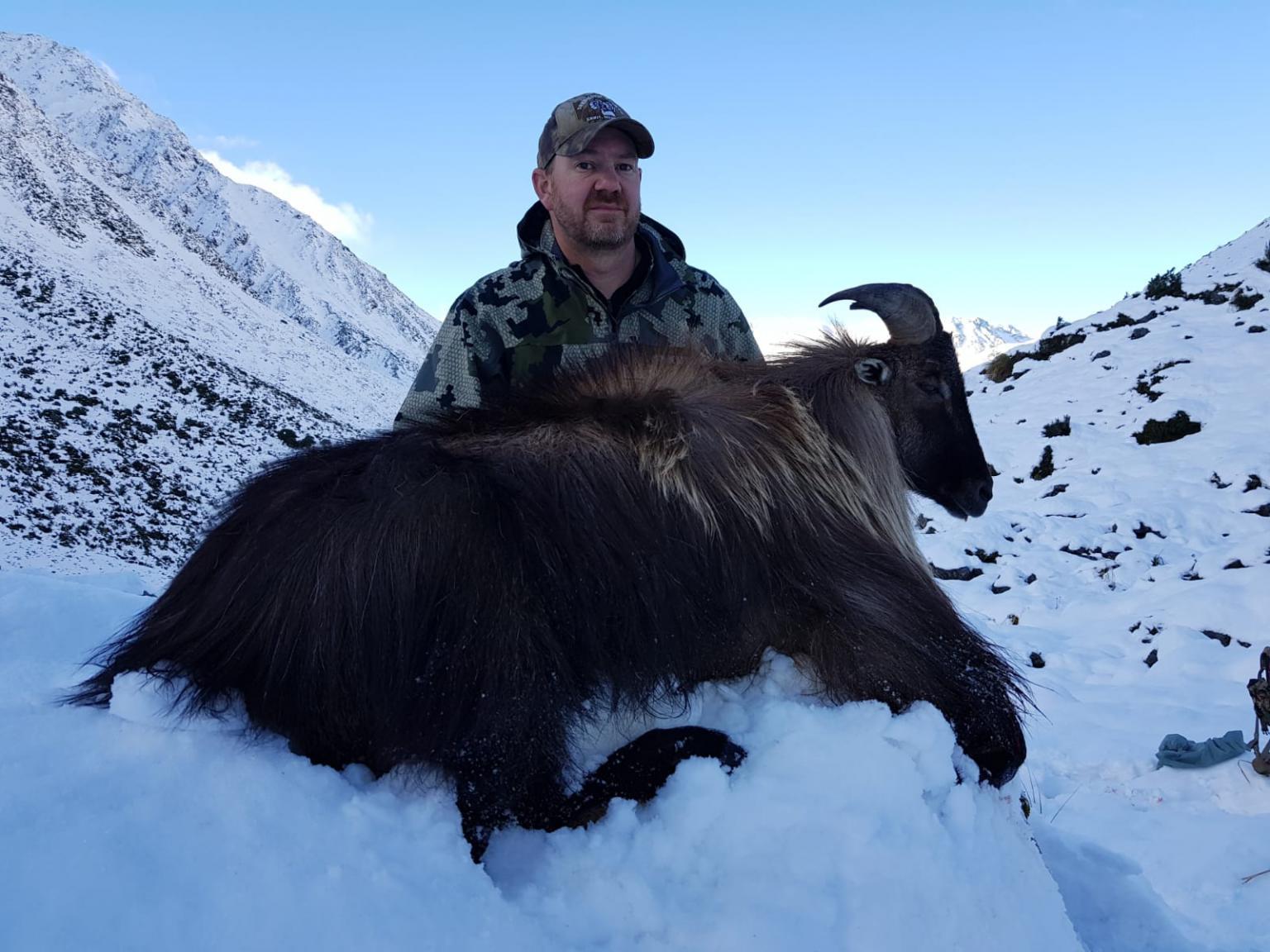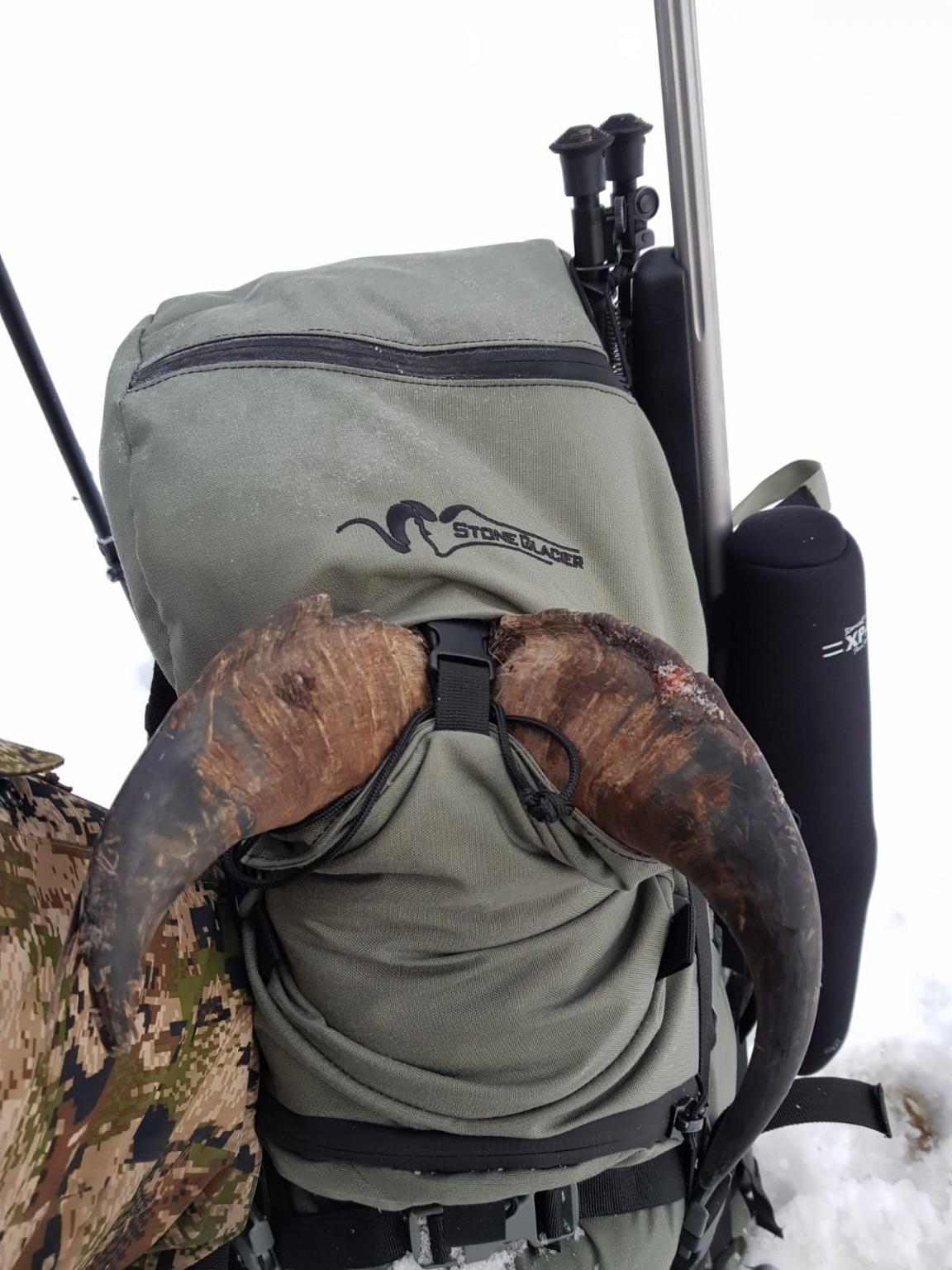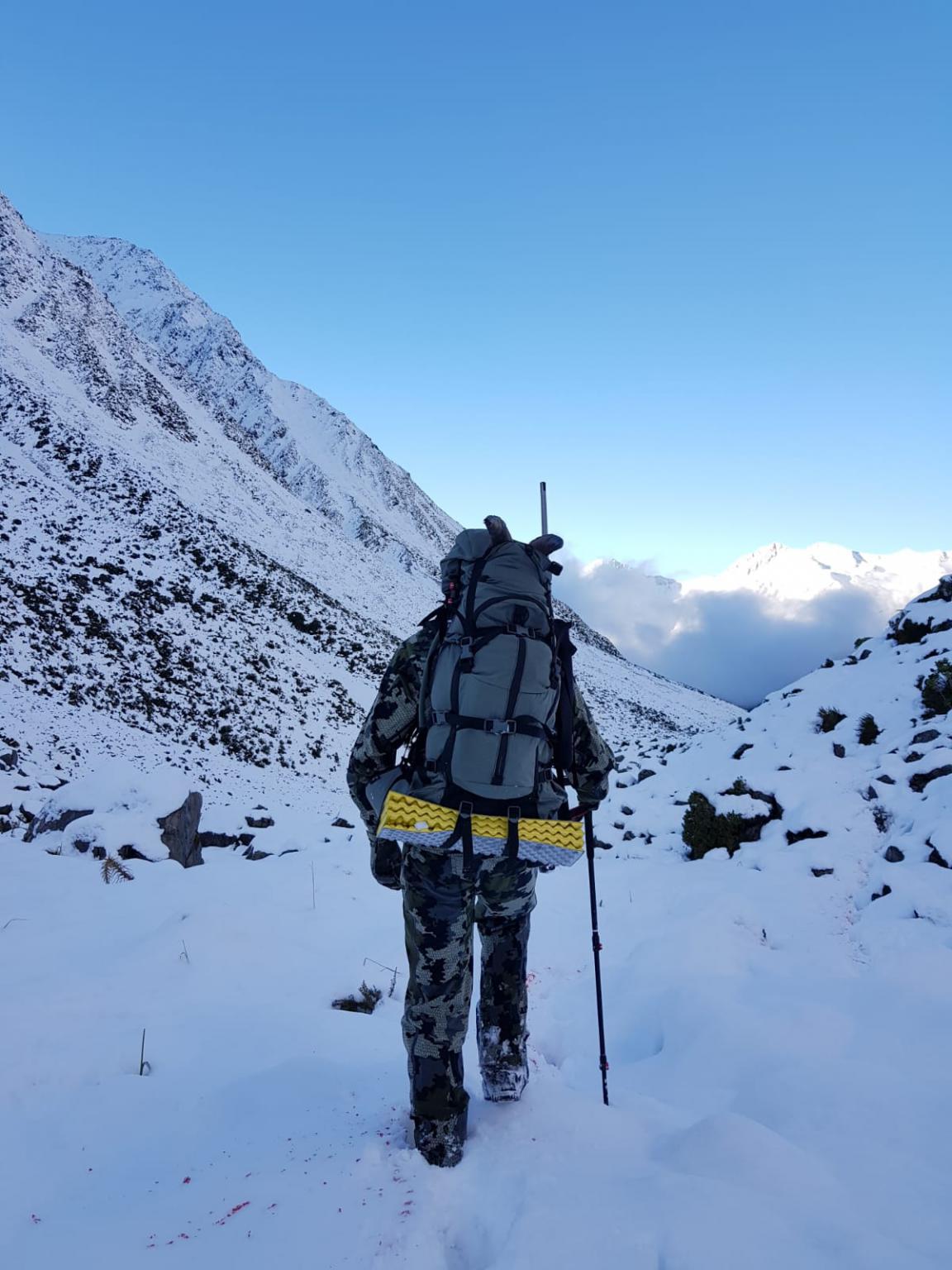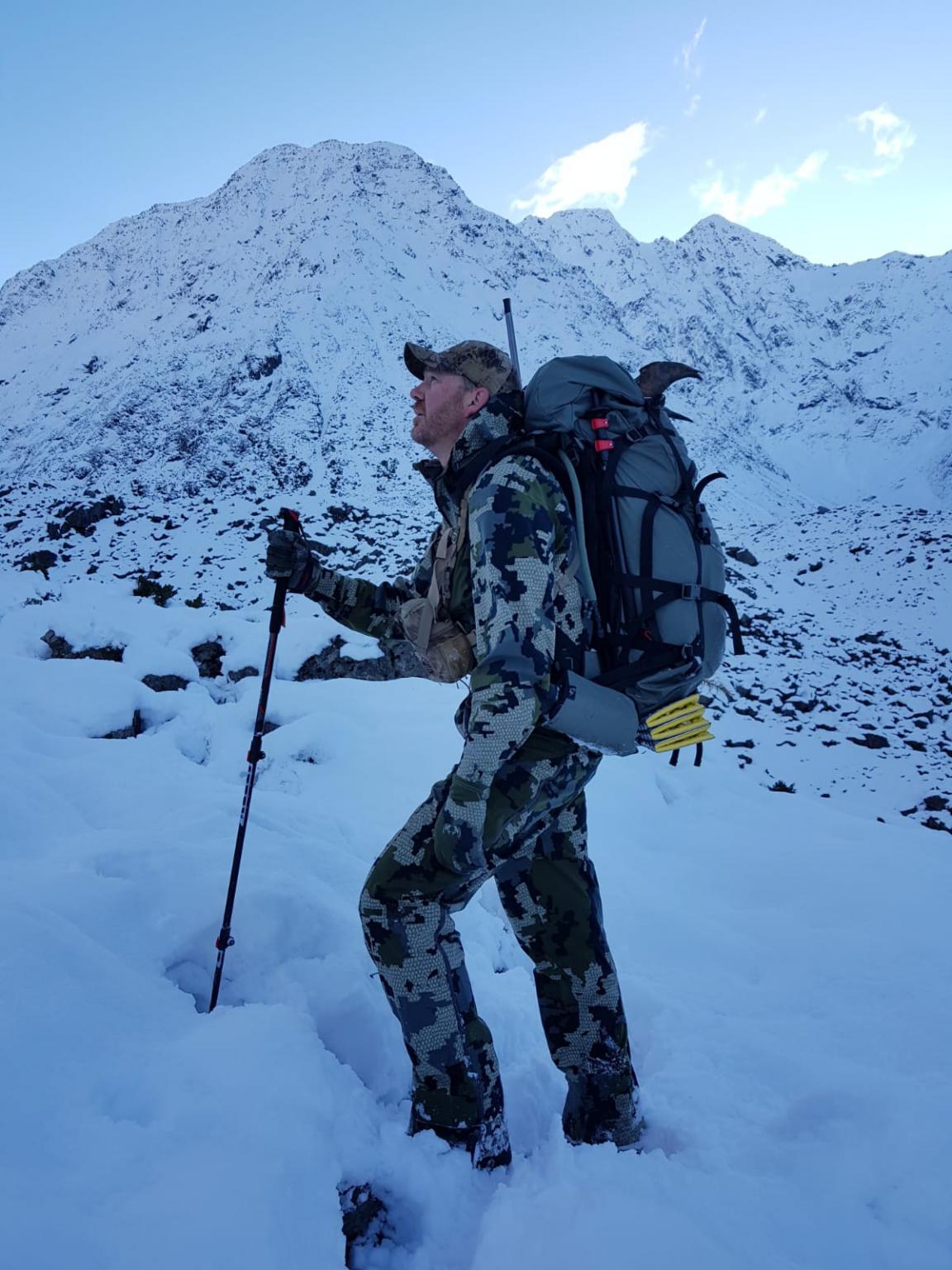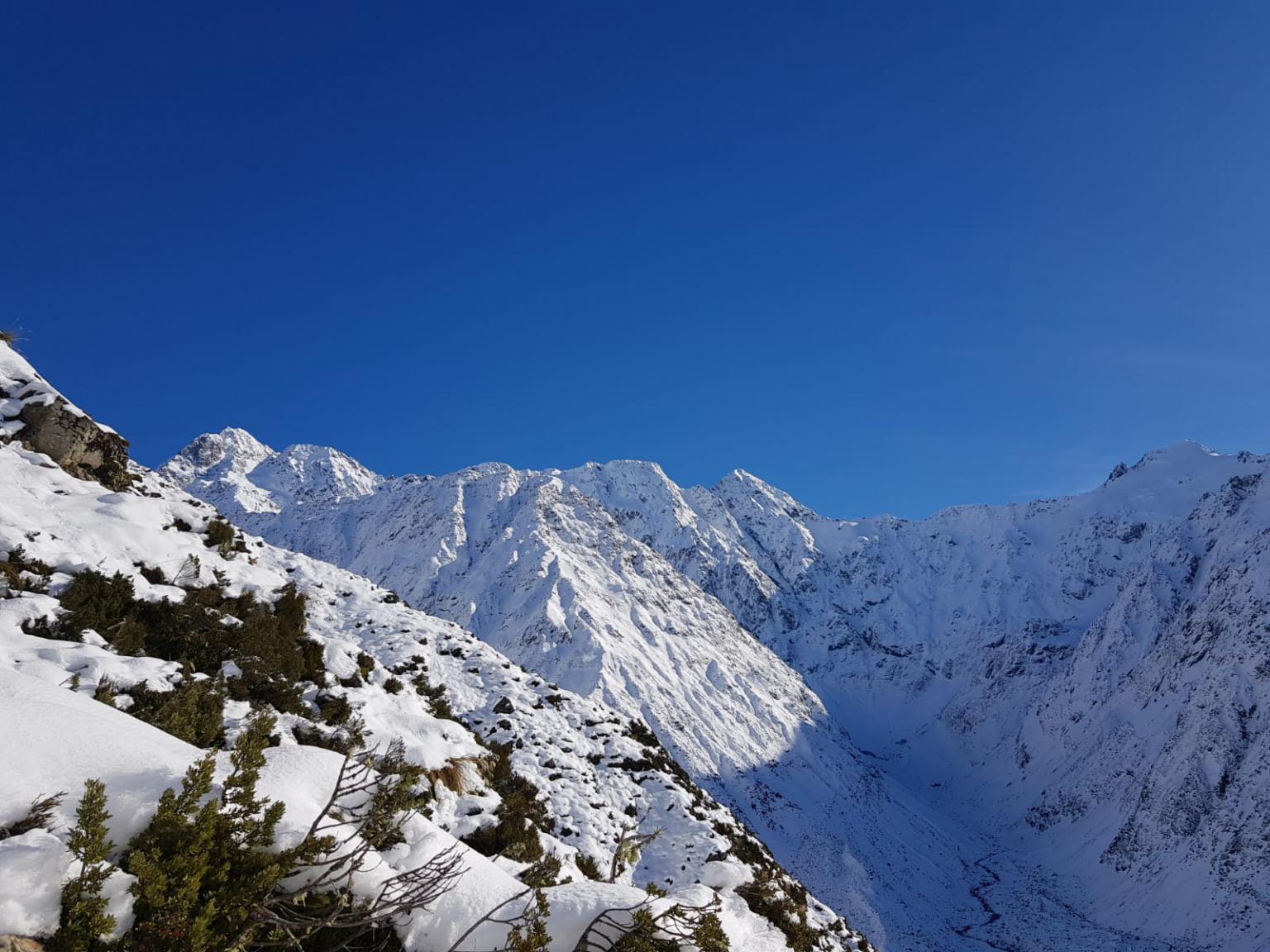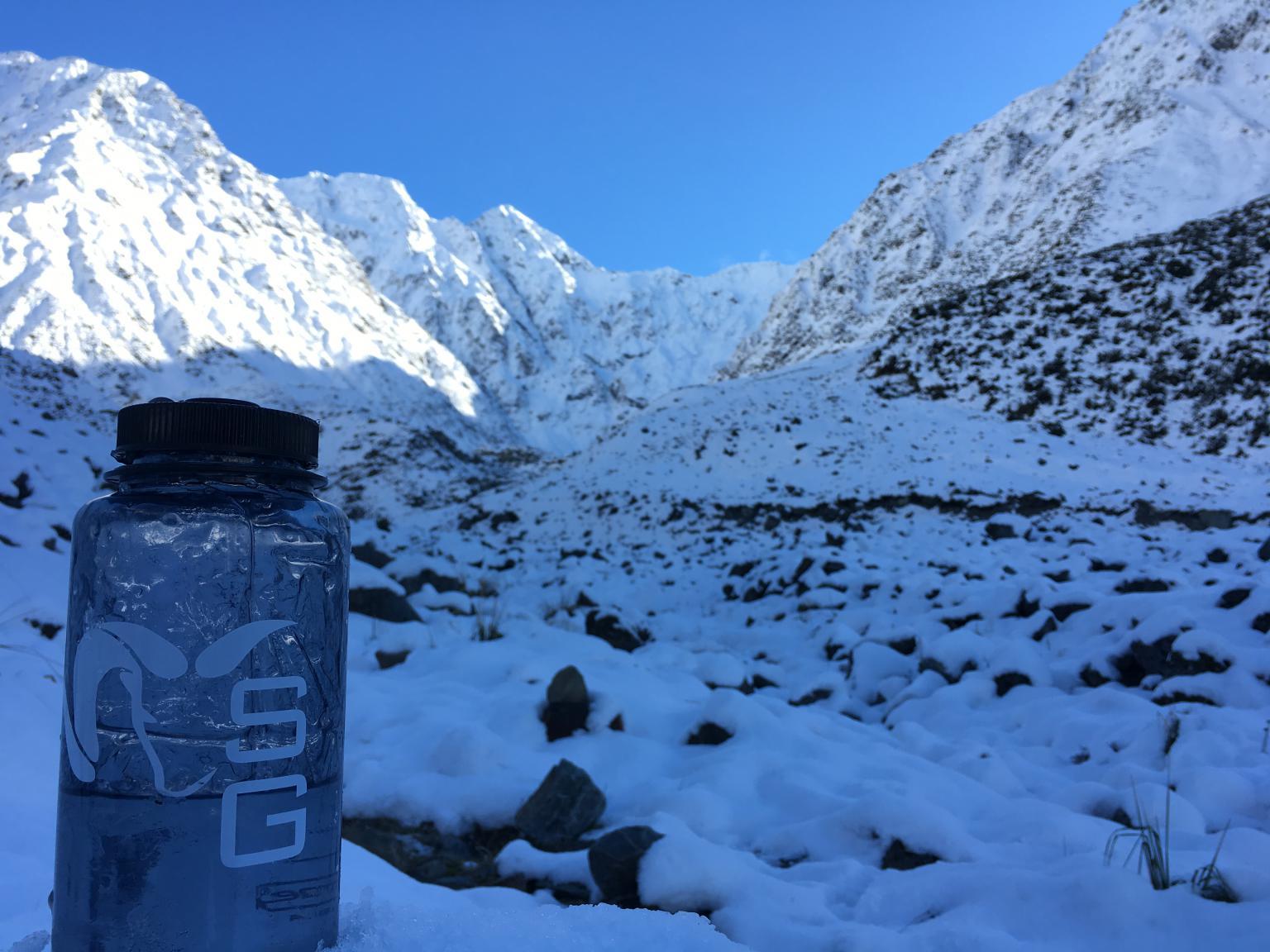James270
FNG
The “Itch-Scratch Cycle” is a phenomenon that is most commonly associated with skin conditions such as eczema. Basically, the skin feels itchy which leads to scratching which then causes the skin to feel even more itchy which in turn can perpetuate the disease. After a recent visit to New Zealand I have reached the conclusion that Tahr hunting is my eczema.
The Himalayan Tahr is rightfully regarded as one of the South Pacific’s premier game animals and for good reason. The sheer beauty of the country they call home is only matched by the toughness of the quarry and the conditions they live in. The terrain of the mountain hunt with its breathtaking changes in altitude provides both a physical and metaphorical backdrop with the highest of highs and lowest of lows a constant companion.
After getting a mild taste of the New Zealand Alps during a Tahr and Chamois hunt in 2016 I knew that I needed to get back into the mountains as soon as life would allow. With a desire to experience a rut hunt I started making serious plans in 2017 to hunt the first week of June 2019. Despite the long lead time it seemed from the outset that the whole trip was going to be a bust. Life and career changes saw my hunting partner reluctantly pull out and my fitness and practice regime take a serious hit early on in the piece. The proposed Department of Conservation cull that was to see some 10,000 animals culled from public land only added to my nervousness as June 2019 got closer and I seriously thought about pulling the pin on the hunt and leaving the itch unscratched. A lot of conversations with my NZ contact saw me decide to stay the course albeit with some slight changes to our initial plans.
I ramped up the fitness training in October, a new rifle and scope combination was put together in February and load development was completed in March. Rifle was a Winchester M70 Extreme Weather in 270W topped with a Z3 4-12 x 50 BT shooting a 130g Nosler Accubond hand load. Whilst not the lightest combo on the market it certainly isn’t too offensive to carry.
June finally arrived and I touched down at Christchurch airport just before midnight the day before the hunt was to start. The response to the Christchurch shooting had me questioning my decision to take my rifle with me and whilst I decided to persevere I had developed a plan B in case it didn’t come to fruition. Despite the uncertainty about importing firearms and internet stories of people having their guns seized at the airport, my interaction with the NZ police was as straightforward and friendly as I had previously experienced in 2016. A quick check of paperwork, pay the fee and on to more serious things like discussing where I would be hunting and commenting on the weather. The fact that it was absolutely bucketing down rain and looked to stay that way for the immediate future was going to require some slight changes to the itinerary. The West Coast was going to be a no go for the next four to five days unless I was keen to swap hunting time for drinking time at the local pub. Now, I love a beer as much as the next guy but I hadn’t come to NZ for the Speights.
The rain hadn’t dropped off at all the next morning but after a planning session over a couple of coffees we left Christchurch and headed west. The good news was that the rain stopped about 2 hours after we left the city. The bad news was that it was replaced by snow and the chance of getting a flight into the hills that day were looking remote. Fortunately the gods of hunting smiled upon us and the skies cleared long enough for us to get into the air and we headed off to our spot for the week.
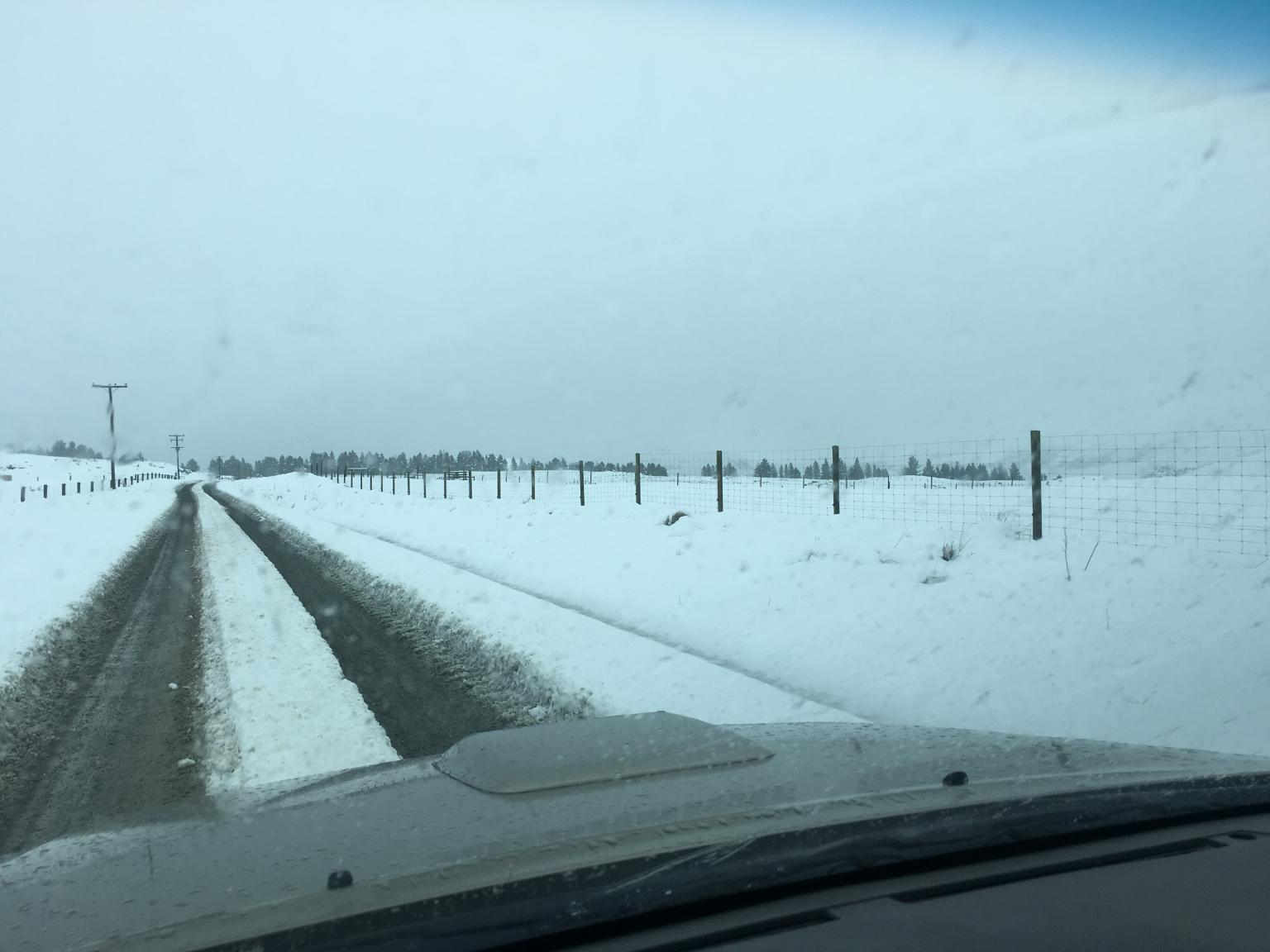
At least the rain had stopped
“I don’t know what’s under that snow so I will hold it in a hover while you two jump out and unload.” came the call over the radio from the pilot as we approached camp. Little was I to know that unknown hazards under the 45-60cm of fresh powder was to be a common theme during the rest of the week. A quick drop of gear at camp and with daypacks assembled we headed out towards the head of the valley to get a feel for the lay of the land and spend the few remaining hours of daylight glassing the bluffs and tops for Tahr.
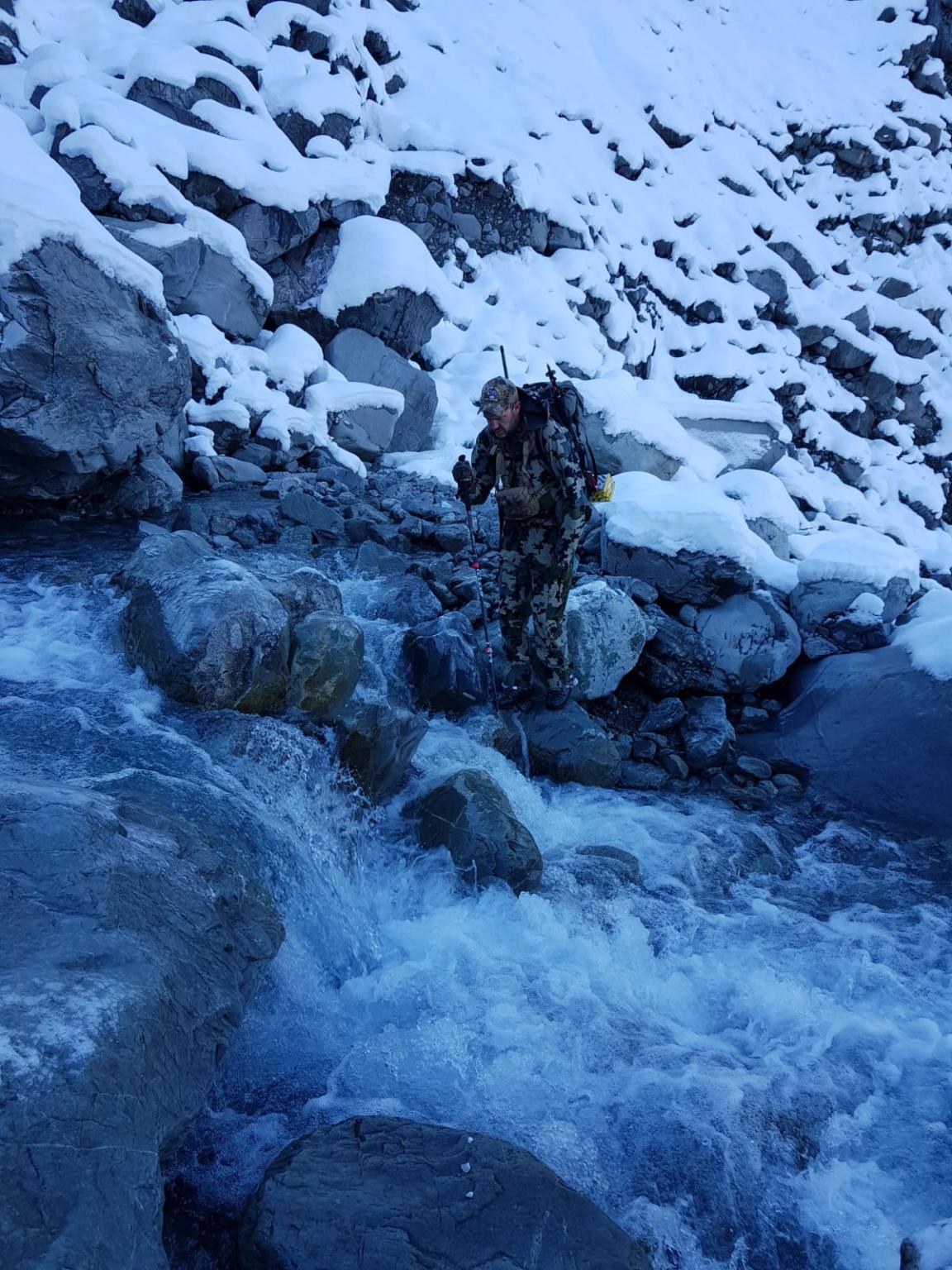
River crossings were a common occurrence as we worked our way up the valley
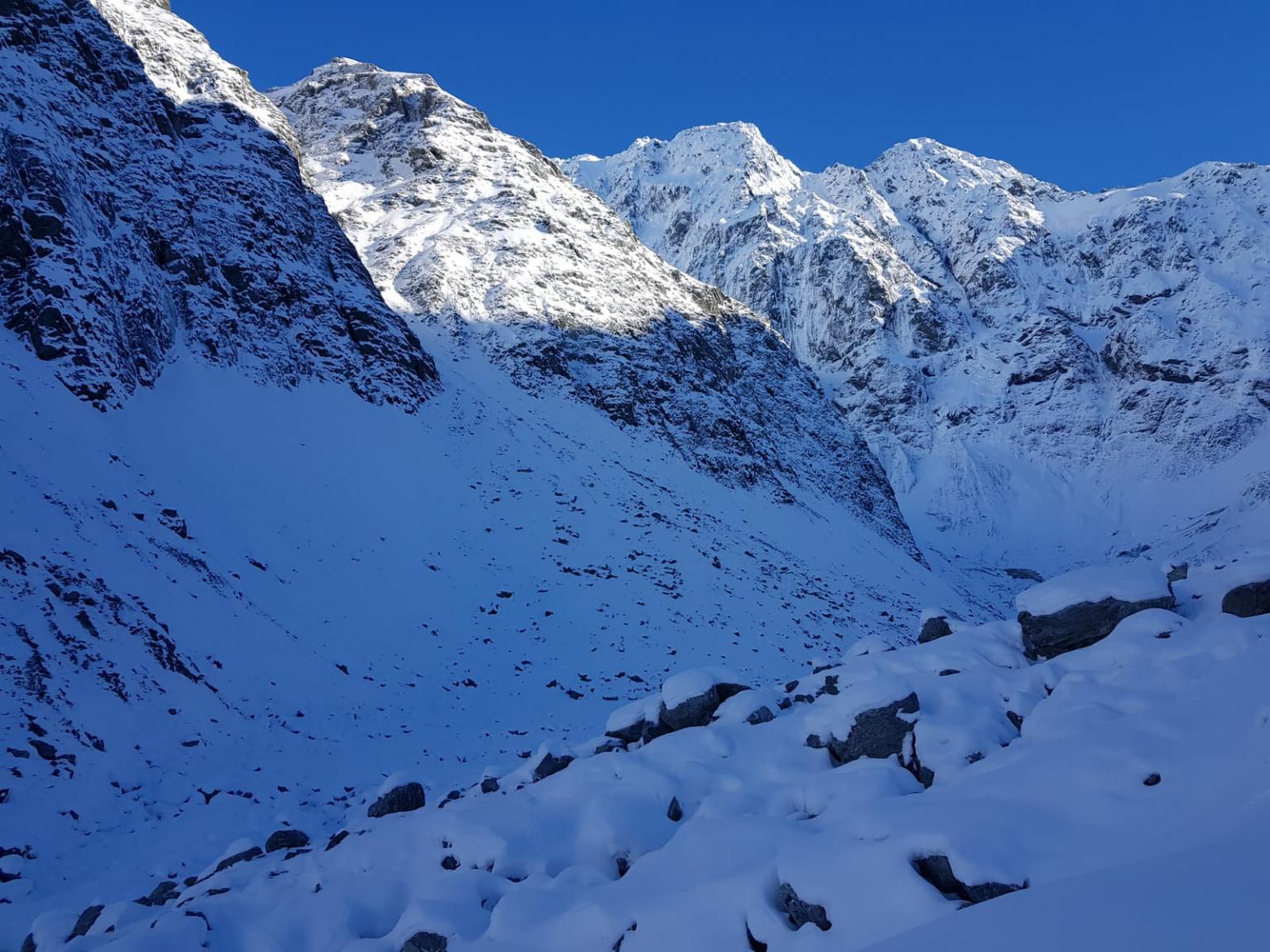
Beautiful but daunting country
I think we were about five hundred meters from camp when the walking through the knee deep snow had me wishing I had packed my snow shoes and toboggan. Not knowing what lay beneath the surface made each step a bit of a lucky dip and the loose rock and boulder strewn slopes that I had thought challenging on my last visit to NZ took on a whole new world of tough this time around. However, I was stoked to be back in the mountains and whilst only a few immature bulls, nannies and kids were spotted high on the tops I went to bed that night excited about what the next few days would deliver.
Conditions were clear and cold with a reasonable breeze as we left camp in the dark the following morning and once again made our way towards the head of the valley. We soon glassed up a herd about a mile up river that was going to be worth a second look so we slowly worked our way upstream and started to climb to a better vantage point. It was about two in the afternoon by the time we were in position and the temperature was dropping fast in the shadows of the higher peaks as we sat and watched a solid bull through the spotter. The image of his mane blowing in the wind, his incredible body mass and a solid set of horns made the decision that he was definitely worth shooting. A solid but cold rest on a snow covered boulder made the 350 metre shot on a steep upward angle doable and one that I was comfortable taking. The bull jolted but didn’t fall at the first hit that was a little too far back but the second shot was true and he staggered and fell out of sight into a snow and ice covered chute. The nannies milled around in confusion and as the herd moved off about twenty minutes later the big bull wasn’t with them and we were confident that he was dead. Now all we had to do was to go and get him. It was now about three thirty and the sound of localised avalanches off the nearby ice face at the river head dictated that discretion was definitely the better part of valour and that the old bull would need to spend another night on the mountain before we could retrieve him.
The Bull up on the tops
Dawn the next morning saw us up river once again studying photos of the location of yesterday’s bull and the imposing terrain as we tried to map out a route to the where we believed the bull had fallen. After about an hour we had worked out a plan and so started the solid climb up the snow covered mountain. It also marked the start of what was to be the most physically demanding, mentally challenging and ultimately disappointing thirty six hours of hunting I have yet experienced. Several attempts via different routes were made over the next day and a half before the terrain, weather and safety made calling the bull as “unrecoverable” the only sensible option left. With a family at home, and a NZ local (who I swear is 50% Tahr himself) calling it as too dangerous, I know we made the right decision to shelve the recovery effort but that didn’t help in the slightest as I tried to get to sleep that night. It certainly gave me plenty of “What ifs?” to ponder as we sat out the bad weather for the next twenty four hours in camp.
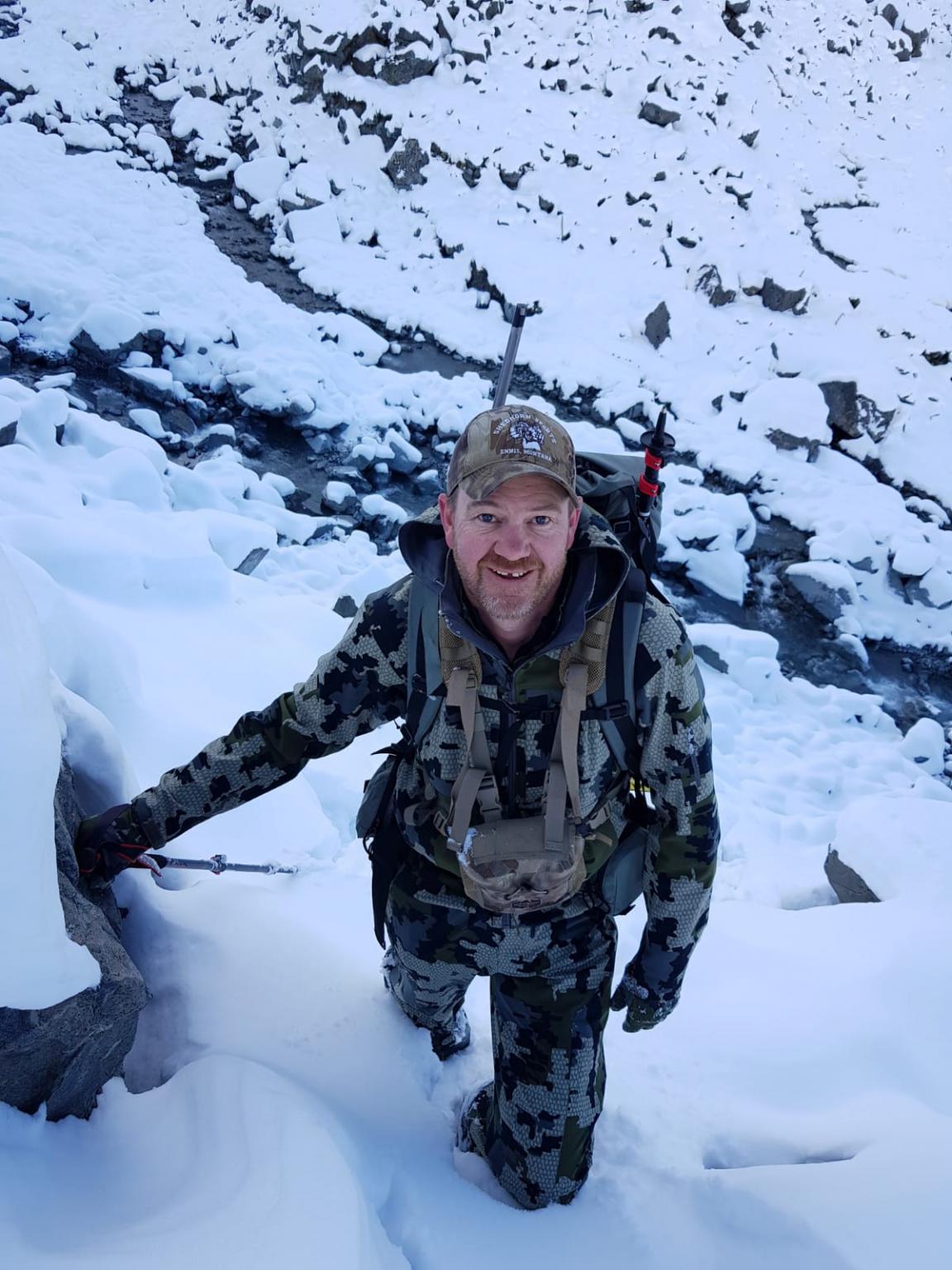
The start of the first climb. The smile would soon disappear
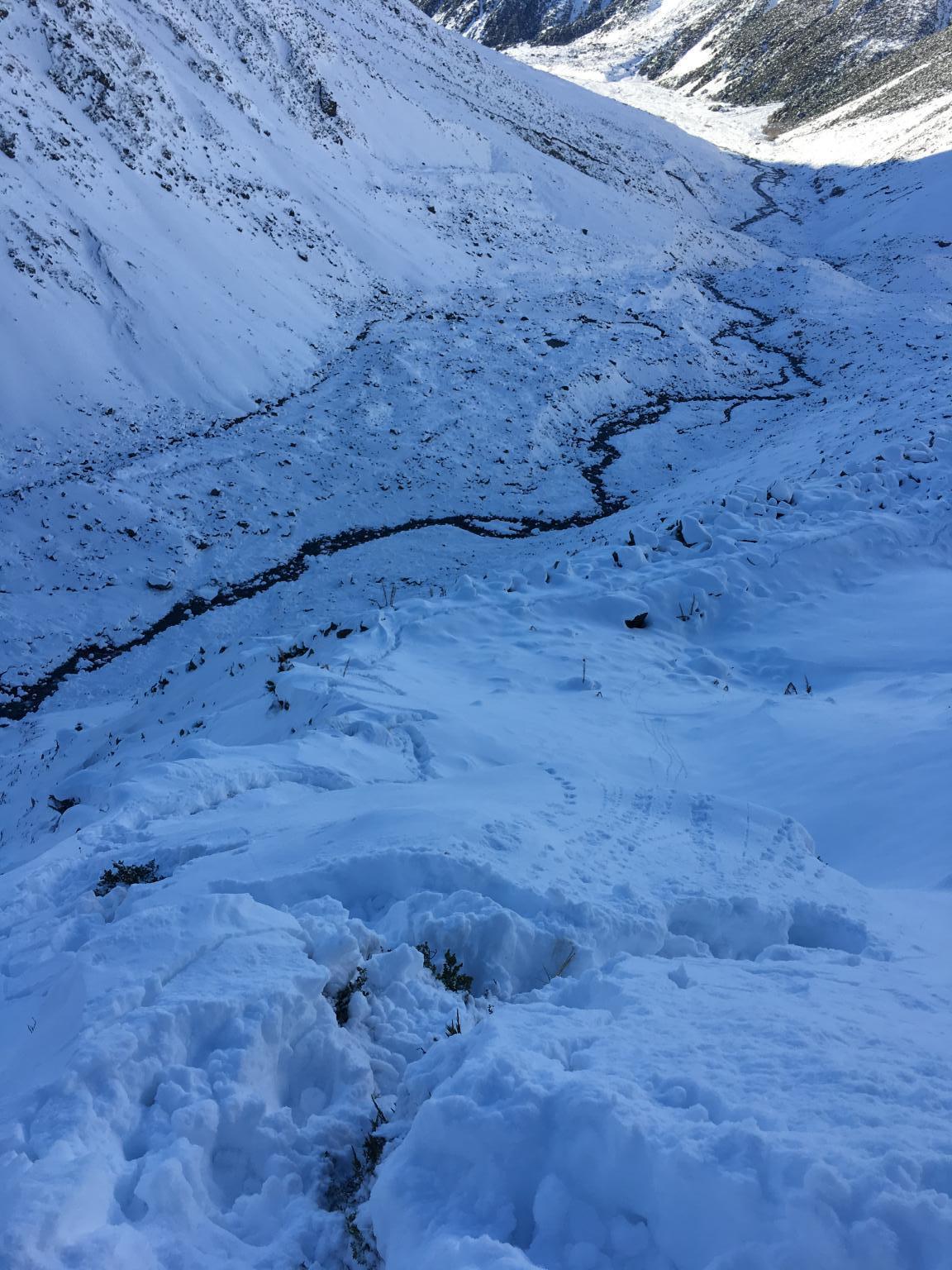
The view from one of several climbs trying to recover the Bull
The Himalayan Tahr is rightfully regarded as one of the South Pacific’s premier game animals and for good reason. The sheer beauty of the country they call home is only matched by the toughness of the quarry and the conditions they live in. The terrain of the mountain hunt with its breathtaking changes in altitude provides both a physical and metaphorical backdrop with the highest of highs and lowest of lows a constant companion.
After getting a mild taste of the New Zealand Alps during a Tahr and Chamois hunt in 2016 I knew that I needed to get back into the mountains as soon as life would allow. With a desire to experience a rut hunt I started making serious plans in 2017 to hunt the first week of June 2019. Despite the long lead time it seemed from the outset that the whole trip was going to be a bust. Life and career changes saw my hunting partner reluctantly pull out and my fitness and practice regime take a serious hit early on in the piece. The proposed Department of Conservation cull that was to see some 10,000 animals culled from public land only added to my nervousness as June 2019 got closer and I seriously thought about pulling the pin on the hunt and leaving the itch unscratched. A lot of conversations with my NZ contact saw me decide to stay the course albeit with some slight changes to our initial plans.
I ramped up the fitness training in October, a new rifle and scope combination was put together in February and load development was completed in March. Rifle was a Winchester M70 Extreme Weather in 270W topped with a Z3 4-12 x 50 BT shooting a 130g Nosler Accubond hand load. Whilst not the lightest combo on the market it certainly isn’t too offensive to carry.
June finally arrived and I touched down at Christchurch airport just before midnight the day before the hunt was to start. The response to the Christchurch shooting had me questioning my decision to take my rifle with me and whilst I decided to persevere I had developed a plan B in case it didn’t come to fruition. Despite the uncertainty about importing firearms and internet stories of people having their guns seized at the airport, my interaction with the NZ police was as straightforward and friendly as I had previously experienced in 2016. A quick check of paperwork, pay the fee and on to more serious things like discussing where I would be hunting and commenting on the weather. The fact that it was absolutely bucketing down rain and looked to stay that way for the immediate future was going to require some slight changes to the itinerary. The West Coast was going to be a no go for the next four to five days unless I was keen to swap hunting time for drinking time at the local pub. Now, I love a beer as much as the next guy but I hadn’t come to NZ for the Speights.
The rain hadn’t dropped off at all the next morning but after a planning session over a couple of coffees we left Christchurch and headed west. The good news was that the rain stopped about 2 hours after we left the city. The bad news was that it was replaced by snow and the chance of getting a flight into the hills that day were looking remote. Fortunately the gods of hunting smiled upon us and the skies cleared long enough for us to get into the air and we headed off to our spot for the week.

At least the rain had stopped
“I don’t know what’s under that snow so I will hold it in a hover while you two jump out and unload.” came the call over the radio from the pilot as we approached camp. Little was I to know that unknown hazards under the 45-60cm of fresh powder was to be a common theme during the rest of the week. A quick drop of gear at camp and with daypacks assembled we headed out towards the head of the valley to get a feel for the lay of the land and spend the few remaining hours of daylight glassing the bluffs and tops for Tahr.

River crossings were a common occurrence as we worked our way up the valley

Beautiful but daunting country
I think we were about five hundred meters from camp when the walking through the knee deep snow had me wishing I had packed my snow shoes and toboggan. Not knowing what lay beneath the surface made each step a bit of a lucky dip and the loose rock and boulder strewn slopes that I had thought challenging on my last visit to NZ took on a whole new world of tough this time around. However, I was stoked to be back in the mountains and whilst only a few immature bulls, nannies and kids were spotted high on the tops I went to bed that night excited about what the next few days would deliver.
Conditions were clear and cold with a reasonable breeze as we left camp in the dark the following morning and once again made our way towards the head of the valley. We soon glassed up a herd about a mile up river that was going to be worth a second look so we slowly worked our way upstream and started to climb to a better vantage point. It was about two in the afternoon by the time we were in position and the temperature was dropping fast in the shadows of the higher peaks as we sat and watched a solid bull through the spotter. The image of his mane blowing in the wind, his incredible body mass and a solid set of horns made the decision that he was definitely worth shooting. A solid but cold rest on a snow covered boulder made the 350 metre shot on a steep upward angle doable and one that I was comfortable taking. The bull jolted but didn’t fall at the first hit that was a little too far back but the second shot was true and he staggered and fell out of sight into a snow and ice covered chute. The nannies milled around in confusion and as the herd moved off about twenty minutes later the big bull wasn’t with them and we were confident that he was dead. Now all we had to do was to go and get him. It was now about three thirty and the sound of localised avalanches off the nearby ice face at the river head dictated that discretion was definitely the better part of valour and that the old bull would need to spend another night on the mountain before we could retrieve him.
The Bull up on the tops
Dawn the next morning saw us up river once again studying photos of the location of yesterday’s bull and the imposing terrain as we tried to map out a route to the where we believed the bull had fallen. After about an hour we had worked out a plan and so started the solid climb up the snow covered mountain. It also marked the start of what was to be the most physically demanding, mentally challenging and ultimately disappointing thirty six hours of hunting I have yet experienced. Several attempts via different routes were made over the next day and a half before the terrain, weather and safety made calling the bull as “unrecoverable” the only sensible option left. With a family at home, and a NZ local (who I swear is 50% Tahr himself) calling it as too dangerous, I know we made the right decision to shelve the recovery effort but that didn’t help in the slightest as I tried to get to sleep that night. It certainly gave me plenty of “What ifs?” to ponder as we sat out the bad weather for the next twenty four hours in camp.

The start of the first climb. The smile would soon disappear

The view from one of several climbs trying to recover the Bull

